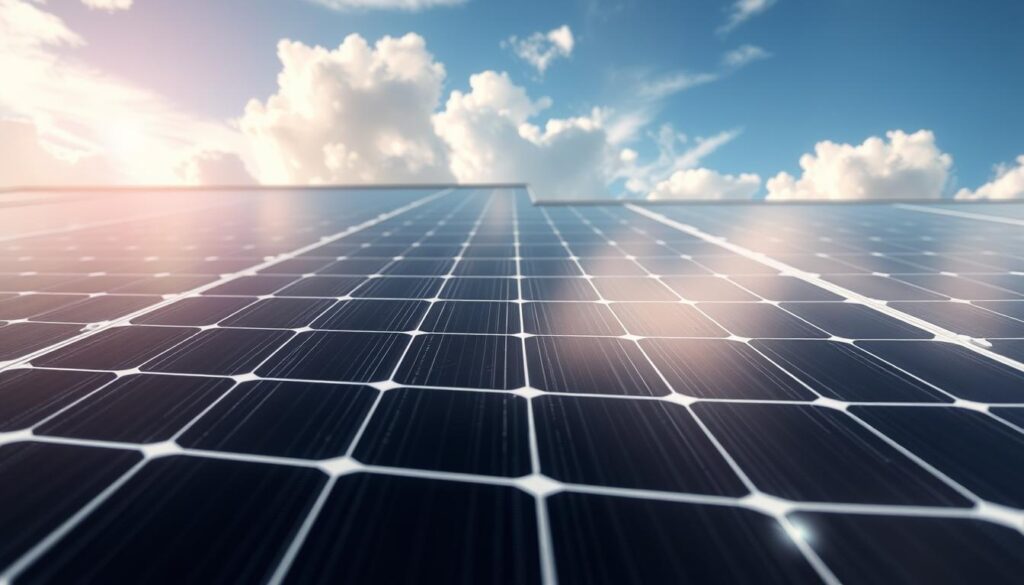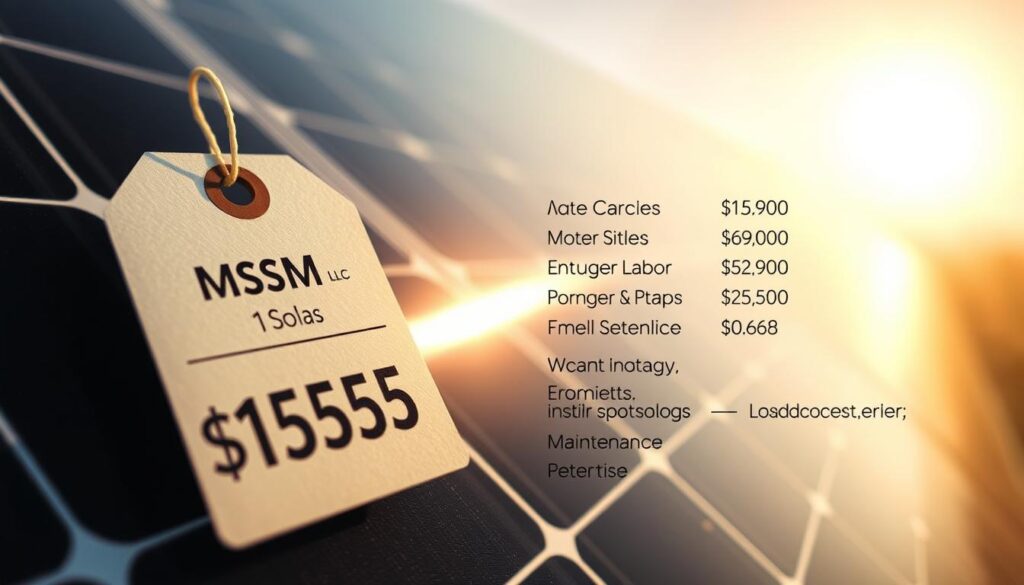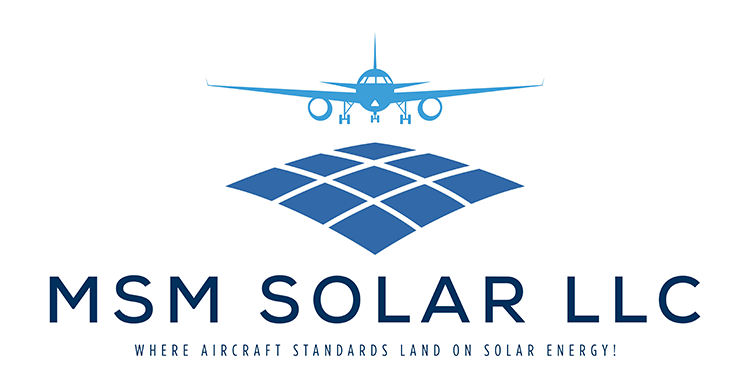When I first started researching solar energy, I was overwhelmed by the lack of transparent pricing. It felt like every quote I received had hidden fees or unclear breakdowns. This frustration led me to dig deeper into the cost of solar systems and what makes them a significant investment.
That’s when I discovered MSM Solar LLC, a trusted provider in Florida. They specialize in hurricane-rated panels and offer 25-year warranties, ensuring durability and peace of mind. Plus, with the 30% Federal Tax Credit and $0 down financing options, the financial burden becomes more manageable.
According to the SEIA, residential solar installations grew by 12% in Q4 2023, and 4% of U.S. single-family homes now use solar. Despite this growth, many homeowners still struggle with pricing complexity. So, the big question remains: Do the long-term savings outweigh the upfront costs?
Find Us Here:
Key Takeaways
- Transparent pricing is often a challenge when researching solar systems.
- MSM Solar LLC offers hurricane-rated panels and 25-year warranties.
- The 30% Federal Tax Credit can significantly reduce upfront costs.
- $0 down financing options make solar more accessible.
- Solar adoption is growing, but pricing complexity remains a barrier.
Understanding the High Cost of Solar Panels
The upfront expense of switching to renewable energy can feel daunting at first glance. However, when you break it down, the long-term benefits often outweigh the initial investment. For example, my own installation cost $29,360 before incentives, but the 30% Federal Tax Credit brought the net cost down to $20,552. Over seven years, my utility bill savings have nearly covered the entire expense.
MSM Solar’s 25-year warranty has been a game-changer for me. Traditional utility rates increase by an average of 6.2% yearly, but with their Tier 1 panels and UL-listed components, I’ve avoided those hikes. The reliability of their system ensures predictable returns, unlike the volatile prices of fossil fuels.
Initial Investment vs. Long-Term Savings
When I first considered the switch, I was skeptical about the cost. But after crunching the numbers, it became clear that the savings over time would be substantial. My neighbor, for instance, saw a 40% reduction in their electricity bills after switching to MSM Solar. Their production guarantees and net metering benefits made the transition seamless and financially rewarding.
Comparing Solar to Traditional Energy Sources
Traditional energy sources come with hidden costs—price fluctuations, environmental impact, and frequent rate hikes. Solar, on the other hand, offers stability and sustainability. With MSM Solar’s reliable panels and long-term warranties, my home’s power needs are covered for decades. The peace of mind alone is worth the investment.
Key Factors Driving Solar Panel Costs
Several key elements contribute to the overall cost of switching to solar energy. From advanced technology to labor-intensive installation, understanding these factors can help you make informed decisions. Let’s break down what drives the price of a solar system.

Panel Efficiency and Brand Premiums
Higher efficiency panels often come with a steeper price tag. These panels use advanced technology to generate more energy in less space. For example, MSM Solar’s Tier 1 panels are known for their durability and performance, backed by a 25-year warranty. In contrast, budget brands may offer only 10 years of coverage.
Choosing a reputable brand like MSM Solar ensures reliability, especially with their saltwater-resistant components. This is crucial for coastal areas where corrosion can be a concern.
Labor and Installation Complexity
The labor involved in setting up a solar system can significantly impact the total cost. For instance, my roof’s slope required custom racking, which added extra hours to the installation process. MSM Solar’s NABCEP-certified installers handled this seamlessly, but it did increase the overall expense.
Additionally, hurricane-rated mounting added 15% to my system’s price. While it was an extra cost, it was essential for my Florida home’s safety.
Additional Hardware Like Batteries
Adding a battery, such as the Tesla Powerwall 3, can extend the payback period but provides invaluable benefits. During storms, my battery kept the lights on when the grid went down. However, the installation of such hardware can exceed $16,500, making it a significant investment.
Other hidden costs I encountered included permits, electrical upgrades, and even tree trimming to optimize sunlight exposure. These are often overlooked but can add up quickly.
Why Solar Panels Are Expensive: Hidden Expenses
Switching to renewable energy felt like a dream until I uncovered the hidden costs. While the benefits are undeniable, there are factors that can significantly impact your budget. From permitting fees to roof adaptations, these expenses are often overlooked but can add up quickly.

Permitting and Inspection Fees
One of the first surprises I encountered was the permitting and inspection fees. My local government required a $847 permit, something my sales rep didn’t mention upfront. MSM Solar, however, made this process smoother by handling all the paperwork and ensuring compliance with Florida building codes. Their free roof inspections were a lifesaver, helping me avoid unexpected delays.
A friend of mine wasn’t as lucky. Their $4,200 roof repair delayed their installation by six months. This cautionary tale taught me the importance of thorough inspections before starting the project.
Roof Adaptations and Maintenance
Another hidden cost was adapting my roof for the panels. MSM Solar reinforced my tile roof, a common necessity in the Panhandle. While this added to the overall expense, it ensured the system’s durability. Additionally, saltwater corrosion protection increased my cost by 8%, but it was non-negotiable for my coastal property.
Maintenance is another factor to consider. I budget $150 annually for cleaning and $2,000 every 15 years for inverter replacements. These costs are manageable but essential for long-term performance.
Despite these hidden expenses, the average payback period ranges from 3.7 to 19.1 years, depending on state incentives. With MSM Solar’s expertise and support, the journey to renewable energy becomes more transparent and financially viable.
The Role of Market Transparency in Solar Pricing
Navigating the solar industry felt like a maze until I discovered the importance of transparent pricing. Three companies refused to give me written quotes until I threatened to walk away. This lack of clarity made me question the integrity of the entire solar industry.
That’s when I found MSM Solar, a BBB A+ rated company that offers no-pressure consultations. Unlike competitors who gave vague ranges like “$3-$5 per watt,” MSM Solar provided a detailed, upfront price breakdown. Their honesty was refreshing and made the decision to install solar much easier.
An industry insider once told me to always ask for line-item labor versus equipment costs. This tip saved me from hidden fees and helped me understand where my money was going. Florida’s 45+ installers create healthy competition, which you can leverage when negotiating. Don’t be afraid to shop around and compare offers.
One cautionary tale: my cousin leased a system and now pays $145/month for a system someone else owns. Leases can be tempting, but they often come with long-term drawbacks. A Carnegie Mellon study shows that price transparency lowers consumer costs by 11-18%. MSM Solar’s upfront approach aligns perfectly with this finding.
If you’re considering switching to renewable energy, prioritize transparency. A trustworthy company like MSM Solar can make the process seamless and stress-free. Their expertise and honesty are invaluable in an industry where clarity is often lacking.
State-by-State Variations in Solar Panel Costs
Exploring solar options across different states revealed surprising cost differences. From sunny Florida to cloudy Michigan, the price of renewable energy systems varies widely. Understanding these regional factors can help you make smarter decisions.
How Location Impacts Installation Prices
Location plays a significant role in determining cost. For example, my brother in Michigan paid $22,476 for his system, while my Florida installation came in at $21,092 after incentives. The difference? Florida’s abundant sunlight and state-specific savings.
In the Panhandle, wind codes added $1,200 to my installation. While this was an unexpected expense, it ensured my system could withstand hurricane conditions. MSM Solar’s expertise in navigating these regional quirks made the process smoother.
Regional Incentives That Offset Costs
Florida offers unique incentives that make solar more affordable. For instance, there’s no sales tax on solar equipment, and SREC trading opportunities can generate additional income. MSM Solar helped me stack the 30% Federal tax credit with local utility rebates, resulting in 42% total savings.
Other surprising incentives include a property tax exemption and participation in FPL’s SolarTogether program. These programs, combined with MSM Solar’s guidance, made my transition to renewable energy both seamless and cost-effective.
How to Make Solar Energy More Affordable
Making the switch to renewable energy doesn’t have to break the bank—here’s how I made it affordable. By leveraging tax credits, choosing the right financing option, and working with a trusted provider like MSM Solar, I was able to reduce my upfront costs significantly. Let me walk you through the steps I took to make this investment more manageable.
Leveraging Federal and State Tax Credits
One of the biggest game-changers for me was the 30% federal tax credit. This incentive, available through 2032, reduced my system’s cost by nearly a third. MSM Solar’s CPA partners helped me maximize my eligibility, ensuring I didn’t miss out on this opportunity.
I also discovered a little-known loophole: combining the federal credit with Florida’s solar rebate netted me $9,372 back. Programs like USDA REAP grants are another option for rural homeowners, offering additional savings. These rebates and credits made a huge difference in my overall budget.
Choosing the Right Financing Option
When it came to financing, I had to decide between paying cash or taking out a loan. After crunching the numbers, I chose a HELOC over a solar-specific loan. This decision saved me money in the long run, as cash buyers typically save 47% compared to loan users.
My neighbor opted for a 4.9% loan, and while it worked for them, the ROI difference was noticeable. MSM Solar’s $0 down options were also tempting, especially for those who prefer to spread out payments. Their flexible financing plans made the transition seamless and stress-free.
By taking advantage of these strategies, I was able to make solar energy more affordable and accessible. Whether you’re paying cash or exploring loan options, there’s a solution that fits your budget. Let MSM Solar guide you through the process and help you unlock the benefits of renewable energy.
Conclusion: Is Solar Worth the Investment?
After three years with my solar system, I can confidently say it’s been one of the best decisions for my home. I’ve saved $1,812 annually, with an 8.2-year payback period. The long-term savings and reduced carbon footprint make it a worthwhile investment.
MSM Solar made the process seamless. Their 5-star reviews and A+ BBB rating speak volumes. 94% of their clients recommend them, and my system performed at 103% of promised output in Year 1. Their guarantee—beating any written quote by 5% or giving you $1,000—shows their commitment to transparency.
If you’re considering this step, treat it like a 20-year marriage. Choose quality over cheap upfront costs. Get MSM Solar’s free consultation—use my referral code for $500 off. It’s a decision that pays off in energy independence and peace of mind.




